by Gordon Taylor | 4/30/2008 11:45:00 PM
Guerrilla Girls: Kandil Mountain.
Some smiles can kill, some will break your heart; and it's easy to see that the picture above fits into the latter category. In October 2007, when I started posting online, I began by writing about a young PKK soldier code-named Devrim Siirt, who died on Cudi (Judi) Mountain, SE Turkey, in 2005. Her photograph aroused the same feelings--delight, sorrow, confusion, anger, more sorrow--that I feel when looking at these girls. Who are they? What path brought them to this snowy place, where life is hard and violent death a real possibility? I asked similar questions about Aynur, the beautiful girl who became "Devrim Siirt." Her ending was sad, I noted, but she probably had attained some glimpse of happiness and freedom. And it could have been so much worse. She could have died alone.
She could, in other words, have committed suicide. "On mourra seul," Pascal wrote: "We Die Alone" it is rendered in the title of David Howarth's classic book of wartime adventure. An alternate translation, "One dies alone," makes it sound aristocratic, part of a code that, like it or not, all of us must follow. But while the act of dying is of necessity something that we go through on our own, few people would deny that the presence of friends makes it seem a little more attractive, a little more human. In fact, the title of Howarth's book, which concerns a man who ultimately survives, tells only half the story. "We die alone," it should say, "but we live on with the help of others."
This is why suicide--and I am not speaking of suicide bombing, a low and repulsive act--is such a crushing event. When the remains have been carried away, and the last tears are fallen, we are left with the image of a human being, desolate and solitary, slouched in some dusty corner where her (or his) final thoughts are too terrible to contemplate.
And yet, it is an image that won't go away, especially to anyone who bothers reading the headlines from Kurdistan. One night recently I was scanning Firat News, the pro-PKK news service, for items of interest, and a story jumped out at me. The dateline was 19 April. A "young girl" had committed suicide (intihar etti, in Turkish) in a village in the southeast of Turkey.
The young lady in question was named Nazli, and she was seventeen. On the previous night, it was reported, she had taken the opportunity when the house was empty to go into a room and, using a rope, had hanged herself from the ceiling. The family found her when they returned.
This, of course, is as sad as death can get. And yet, something about it doesn't sound right. "The inquiry is continuing," said the story. Well, yes. But probably it won't continue very far. What can the police (or in this case, the military gendarmes who keep watch over Kurdish villages) do? They could start by asking the family why they all just happened to be gone at that moment. (This was in a dirt-poor village, in a high-altitude region called Baskale, where the temperature was probably near freezing and there surely wasn't a great tradition of going out on the town at night.) They could ask where Nazli got the rope, and whether or not she had been depressed. They could ask about family conflicts. They could ask if she had "dishonored" the family in some way.
The last question is the most important, for Nazli's death has all the hallmarks of the latest trend: compulsory self-administered honor killings. I refer, of course, to the Kurds' disgrace, a tradition that ranks right up there with genital mutilation, Indian bride-burning, and all the other ways in which women are brutalized, exploited, and murdered in the name of rules that were made up by men. Until a few years ago, "honor killings" in Turkey were not strictly classified as murder. If a girl did something to "disgrace" the family, such as wearing the wrong clothes, seeing the wrong boy, etc., then the family would get together and choose one of the girl's brothers, usually the youngest, to kill her and take the rap. If the boy was young enough, and below the age of majority, he would usually escape with a mild sentence.
Now the game has changed. The Turkish government, in response to demands from the European Union, has considerably stiffened the penalties. (Note that only demands from the EU got them to do it.) Life in prison is now the mandatory sentence. But this hasn't stopped the honor killings. Now the girls are required to kill themselves.
Think of it: "You have dishonored us. Only you can cleanse this stain from our family. Kill yourself." Now try getting it as a text message on your cell phone. That's the opening of a 17 July 2006 story from the New York Times. The girl in the story, Derya, got as many as 15 of these text messages a day from her uncles and brothers. In the end she got lucky and found a women's organization in Batman, her home town (pop. 250,000), that took in girls like her. But that only happened after she had tried without success to drown herself in the Tigris River and hang herself with a rope. (An uncle cut her down after the last attempt: presumably not the same uncle who initially texted her and told her to off herself.)
These stories are only the crocodile's eye peeking up from the river; the rest of the beast will show itself any time you choose. In this case, it's a matter of going to the "Ara" window ("Search" in Turkish) of Firat News and typing the words "intihar etti" in the blank space. A tap on the
The stories don't all concern young girls, though they are a big part of it. Worldwide the majority of suicides are males. Though not the majority in Kurdistan, male suicides are plentiful enough. A disturbing number of them are young Kurds who have been drafted into the Turkish Army. These young men are especially vulnerable, subjected as they are to endless harangues about Ataturk, the Fatherland, and the superiority of the Turkish race, and this after having witnessed police brutality as a regular part of growing up. On April 3, for example, a young man in Istanbul set himself on fire rather than go into the Army, while only the day before a Kurdish soldier in Edirne (Adrianople), near the Greek-Bulgarian border, ended his life with a bullet. On April 1 Firat News summarized five suspicious Army deaths in the previous two months, and the headlines go on from there: a gendarme shoots himself near Baskale, a sergeant does it with a hand grenade, another soldier shoots himself in Diyarbakir, another in Silopi, on the Iraqi border. All this leads Firat News (7 March 2008) to dub the Turkish Armed Forces "the world's most suicidal army."
In Kurdistan, however, it is still the women and girls who commit the majority of suicides. In Diyarbakir, for example, from 1996 to 2001 fully 58% of suicides were women and girls, and similar rates hold true for other provinces in the region. Again, this goes directly against patterns documented throughout the world. In 2006 the U.N. sent a Turkish woman, Prof. Yakin Erturk, a Special Rapporteur on violence against women, to the southeast of Turkey to investigate the rash of female suicides. "The majority of women in the provinces visited live lives that are not their own," she reported: "Diverse forms of violence are deliberately used against women who are seen to transgress [the conservative patriarchal] order. Suicides of women in the region occur within such a context."
No surprise in any of this. Prof. Erturk goes on at length in the language of a sociologist, and she is unable to point to an exact link between the suicides and honor killings. But the message is clear: to be a woman in Turkey is bad enough; to be a woman in the Southeast is to court death. The bright spots are few. Women are organizing, often at great risk; NGO's are popping up, providing shelter and counseling to girls in danger. A nationwide organization, "The Purple Roof," based in Istanbul, works to provide resources. But still, the suicides go on.
All of which brings us back to the guerrilla girls and their smiling faces. Obviously they have put themselves in grave danger. If life is hard in places like Diyarbakir and Batman, it is twice as hard in the caves and rocks of the Zagros range. But these young women made a choice. They used their free will, such as it was, and went to the mountains.
And they are not the only ones who are striking out. Tuesday's (4/29/08) Kurdish papers carried a story about another woman, a traditional Kurdish woman who should have been passive but was not: a woman almost Sophoclean in her grandeur. The place: Cizre, a city on the Tigris near the Iraqi border. A totally Kurdish town, except for the Turkish troops that occupy it. The red banners with white lettering are stretched across the streets like a taunt: "How happy is he who calls himself Turk." This is as pro-PKK a place as you will find in the Southeast. In the '90s the two sides fought gun battles in the streets. On Monday an Army delegation arrived, carrying the body of Pvt. Mesut Sanir, killed in action among mountains near the town of Bingol. The private, the army messenger told his mother, had "fallen a martyr" in the battle.
But Kumru Sanir, the boy's mother, was having none of it. "My son has not fallen a martyr!" she told the spokesman. "You send brother to fight against brother and kill each other, and then you come to tell us he is a martyr. My son is not a martyr!" The soldiers, looking embarrassed, said nothing. The boy's older sister was equally bitter, noting that Recep Tayyip Erdogan, the Turkish Prime Minister, sends his children to school in America, "while he sends ours to fight in the mountains." The older sister says nothing about her plans for the future, but we can be sure that she is weighing her options.
Labels: Gordon Taylor






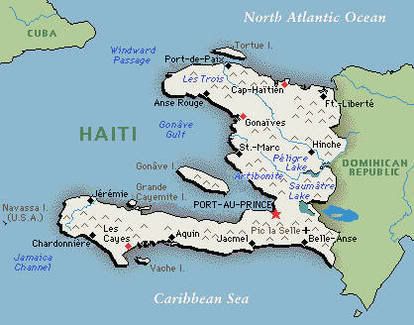


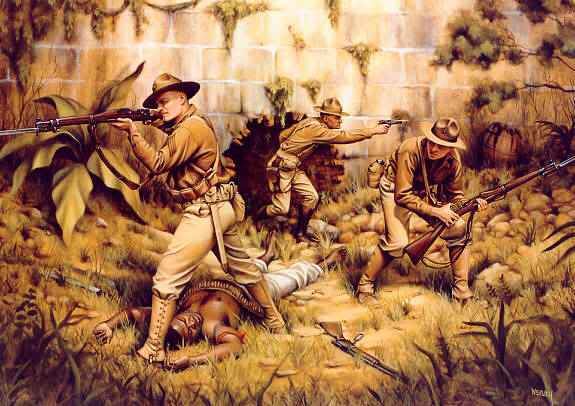


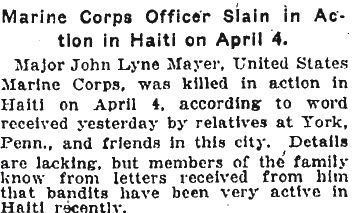

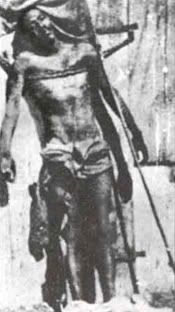


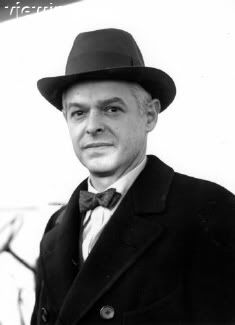 The earnest young man in this picture is Paul Henry Nitze, one of America's foremost defense intellectuals in the 1940's and 1950's (and, indeed, up through the 1980's). In 1949, Nitze served as primary author of an internal State Department document called
The earnest young man in this picture is Paul Henry Nitze, one of America's foremost defense intellectuals in the 1940's and 1950's (and, indeed, up through the 1980's). In 1949, Nitze served as primary author of an internal State Department document called  This square-jawed man is John Foster Dulles, President Eisenhower's Secretary of State from 1953-1960. In a 1954 speech, Dulles
This square-jawed man is John Foster Dulles, President Eisenhower's Secretary of State from 1953-1960. In a 1954 speech, Dulles